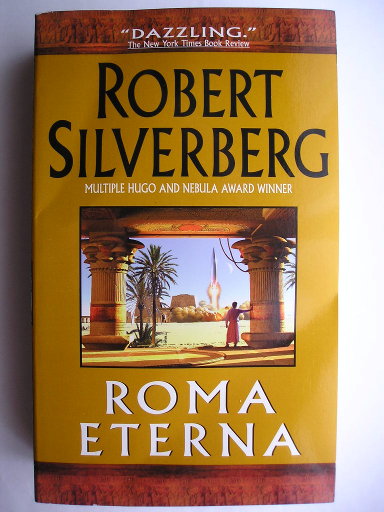
The novel “Roma Eterna” by Robert Silverberg was published for the first time in 2003. It consists of 10 short stories previously published separately between 1989 and 2003.
In the year 1282 A.U.C. the Western Roman Empire is going through a period of crisis between external threats and tensions with the Eastern Empire. The Empire manages to survive offering Rome the hope of a new period of glory but also the problem of maintaining a sufficiently strong imperial power.
The Roman Empire faces a future of tensions between the sovereign of the West and the one of the East alternating periods of expansion to others of weaknesses. Among renaissances and decays, Rome keeps on maintaining its power becoming over the centuries a major world power.
“Roma Eterna” is a ucronia in which Robert Silverberg tells the story of a world where the Roman Empire survived. The author initially wrote the last story and then continued with the others in no particular order. The stories make up about 15 centuries of alternative history.
The difference compared to our history is determined by the lack of affirmation of the Abrahamic religions. In the ucronia created by Robert Silverberg the exodus of the Jews from Egypt never happened, Christianity was never born and in the Roman Empire the traditional religion remained giving its society a greater cohesion.
In the stories, the years are indicated as A.U.C., which means Ab Urbe seasoned, meaning from the founding of the City (Rome). Actually, the Romans didn’t use that calendar that started from 753 B.C. but being a ucronia one can speculate that it was adopted in that alternative Roman Empire.
Doing the math to convert the years into our calendar it turns out that the stories that make up “Roma Eterna” are set in important periods in our history. The years don’t coincide exactly but Robert Silverberg chose to develop a story that takes place in a manner somewhat similar to ours.
From this point of view, the alternative history of “Roma Eterna” seems honestly a bit forced, also because the scientific and technological developments don’t seem to change significantly compared to our history. The survival of the Roman Empire would have prevented the loss of knowledge, such as in science and engineering, so the general idea is that progress would have continued.
Robert Silverberg completely ignored the issue and preferred to focus on the political and social elements of his alternative history. Through the eyes of various characters, often important and part of the imperial power but sometimes ordinary people who for various reasons find themselves involved in significant events, the author telss the changes that take place over the centuries.
I would have liked to read a history of scientific and technological developments of that ucronia. Robert Silverberg is good at telling the story of Rome’s periods of decline alternated with renaissances but for me are limited. In short, a fascinating alternative history but in the end leaves me some doubts about its plausibility.
This is normal when you read a ucronia because the author develops his alternative history based on some ideas that may be questioned for many reasons. My problem with “Roma Eterna” is that I had too much of an impression to read a history that’s different but all too similar to ours.
The fact that it’s not a real novel but a series of stories spanning 15 centuries doesn’t help. Inevitably, each story is focused only on some crucial events. Robert Silverberg manages to give the protagonists of the stories some life but there are too many characters to be truly developed.
I think “Roma Eterna” succeeded in giving a sense of participation in historical events. If that’s enough for you, despite its limitations probably you will like this book.

